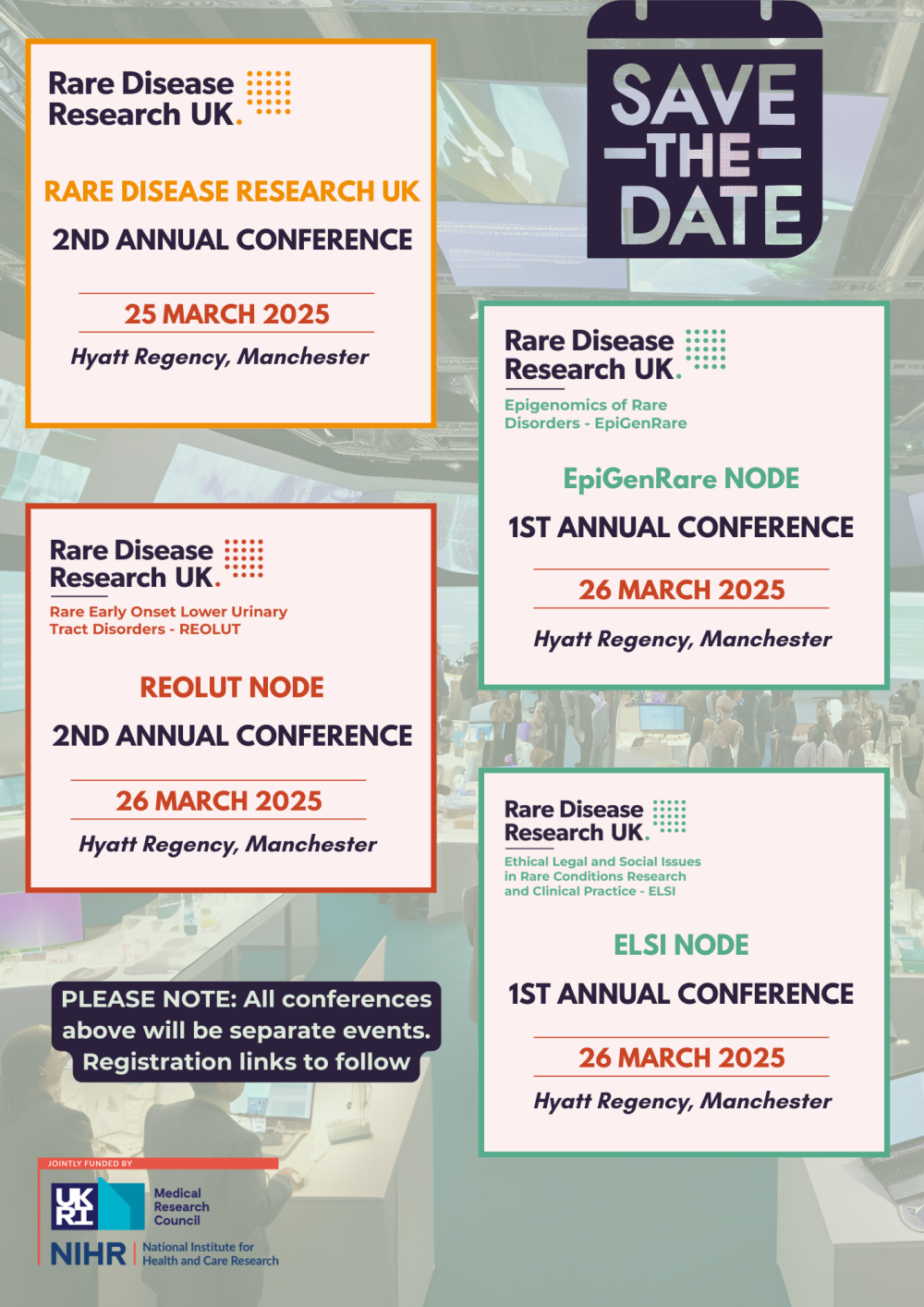The Renal Ciliopathies National Network (CILIAREN) node has made significant strides over the past year in addressing the needs of patients with rare kidney diseases. By contributing to the overarching goals of the Rare Disease Research UK (RDR UK) initiative, CILIAREN is committed to improving the diagnosis, treatment, and long-term outcomes for individuals affected by renal ciliopathies.
1. Key Advancements in Research and Impact on RDR UK’s Goals
One of the most notable achievements of CILIAREN this year is a landmark publication in The Lancet, which delves into the outcomes of patients with rare kidney diseases. The take home message was that patients with rare kidney diseases differ from the general population of individuals with chronic kidney disease: they have higher 5-year rates of kidney failure but higher survival than other patients with chronic disease stages 3-5, and so are over-represented in the cohort of patients requiring kidney replacement therapy. The study emphasizes that by addressing unmet therapeutic need for patients with rare kidney diseases could have a large beneficial effect on long-term kidney replacement therapy demand.
2. Improvements in Diagnosis and Patient Support
CILIAREN has also made significant progress in enhancing the diagnostic process for patients with renal ciliopathies and cystic kidney diseases. This includes the development of tools and analysis pipelines to improve the diagnostic pipeline and shorten the diagnostic odyssey for patients with cystic kidney disease and renal ciliopathies.
3. Key contributions to the field include:
A study led by Orr et al., published in Annals of Human Genetics, which emphasizes the lessons learned from interpreting genomic sequencing data in the context of kidney ciliopathies. This research highlights the critical need for accurate phenotypic data to accompany molecular genetic diagnosis, ensuring that patients receive precise and timely diagnoses.
Another important study, authored by Esson et al. and published in Journal of Rare Diseases, sheds light on the diverse retinal-kidney phenotypes associated with NPHP1 homozygous whole-gene deletions in patients with kidney failure. This research further deepens our understanding of the relationship between genetic mutations and clinical outcomes, paving the way for more personalized patient care.
Through these efforts, CILIAREN is helping to reduce the time to diagnosis and improve patient outcomes, which is a critical component of the network’s mission.
4. Collaborative Efforts to Advance Research
Collaboration remains a cornerstone of CILIAREN’s approach to advancing research in renal ciliopathies. The network has established partnerships with leading experts and institutions across the globe, fostering a collaborative ecosystem that drives innovation. Key collaborations include:
Louise Oni, Liverpool University
Friedhelm Hildebrandt, Boston Children’s Hospital, Massachusetts, USA
Ruxandra Bachmann-Gagescu, Zurich University, Switzerland
Alexander Chang, Center for Kidney Health Research, Department of Population Health Sciences, Geisinger, Pennsylvania, USA,
5. Future Directions and Goals
Looking ahead, CILIAREN is focused on expanding its research efforts and securing additional grant funding to support its agenda. One of the primary goals is to further develop the Kidney Ecosystem project in collaboration with Louise Oni, which is funded by LifeArc. This project aims to create a comprehensive framework for understanding kidney diseases, from basic biology to patient care, ensuring that patients with renal ciliopathies receive the best possible outcomes.
Moreover, CILIAREN will continue to work on reducing the diagnostic odyssey for patients, improving therapeutic strategies, and expanding its international research collaborations. By doing so, the network will not only contribute to the RDR UK’s objectives but also set new standards for the diagnosis and treatment of rare kidney diseases globally.




